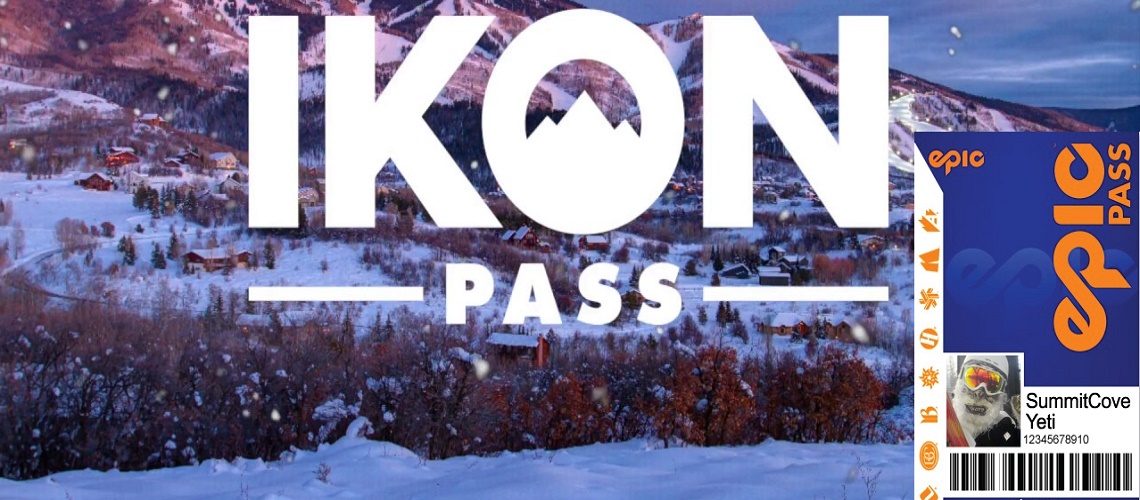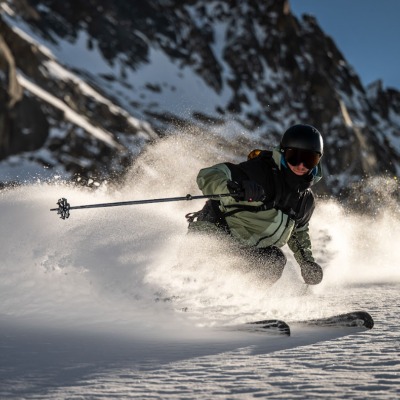Condor Capital Management’s 2017/18 Mid-Season Ski Industry Update: Battle Of The Passes – Epic Vs. Ikon

With January now in the rearview, skiers and snowboarders across the country remain optimistic for a rebound from the notable absence of snowfall that has plagued the first half of the 2017/18 ski season. However, even though weather has not exactly cooperated with skiers this season, recent news surrounding Vail Resorts (Vail) and its newly named competitor Alterra Mountain Co. (Alterra) should leave individuals pleased with the consumer-focused direction of the overall ski industry, according to Ken Schapiro of Condor Capital Management.
Alterra, which formed last year through a partnership between the owners of Aspen Skiing Co. and Denver’s KSL Capital Partners, unveiled a multi-resort pass offering called the Ikon Pass, which unites the firm’s 12 destinations and 11 destination partners that span 9 states and 3 Canadian provinces. Users of the Ikon Pass will be able to ski at popular resorts, such as Aspen Snowmass (note that Aspen Skiing Co.’s other resorts are not included), Mammoth Mountain, Jackson Hole, Big Sky, Alta Ski Area, and more, amounting to nearly 50,000 skiable acres. Note that while Alterra owns Canadian Mountain Holidays (CMH) Heli-Skiing, it will not be included in the Ikon Pass; rather, Ikon passholders will have access to CMH Heli-Skiing early winter booking and summer discounts. Pass privileges have yet to be released but will range from full unlimited access to a set number of days that will vary by destination. The Ikon Pass replaces the Rocky Mountain SuperPass and MAX Pass, while the popular Mountain Collective pass will continue for the 2018/19 season. With a portfolio of 23 of the highest-rated ski resorts in the country, the Ikon Pass stands as a formidable competitor to Vail’s industry-leading Epic Pass, which the company sells about 750,000 of each year.
Not to be outdone, Vail Resorts announced that frequently skied Telluride Ski Resort will be included in Vail’s 2018/19 Epic Pass, while owners of Telluride’s season pass will receive 50% off lift tickets at any mountains owned by Vail. Vail’s 2018/19 Epic Pass will now allow users to ski at the firm’s 15 resorts and 8 partner resorts, as well as gain access to 30 European resorts. The Ikon and Epic passes now each comprise 5 of the top 10 ski resorts in North America, as ranked by ZRankings. Telluride had been the only top-10 resort not included in one of the passes, giving Vail Resorts a vital win after Alterra added several other independent resorts to its pass offering. While the price of the Ikon Pass has not yet been released, individuals can likely expect that it will be similarly priced to Vail’s Epic Pass, which sold for $859 this season. As lift ticket prices at some of Vail’s mountains have reached $199 this season, the Epic Pass can pay for itself after five days of skiing, an attractive offering for many skiers. Given the addition of Telluride to Vail’s Epic Pass, along with the recent announcement of Alterra’s Ikon Pass, it is clear that the trends of resort consolidation and multi-resort pass offerings have been to the benefit of consumers, who can enjoy lengthier ski outings, or simply enjoy the ability to ski at premier destinations that may have been previously infeasible. Furthermore, the entry of Alterra’s Ikon Pass will also likely help consumers’ wallets as increased multi-resort pass competition begins to dampen the notable price increases that have occurred in recent years.
On the weather front, while last ski season certainly had a slow start, the lack of snowfall this season appears to be even more prolonged, particularly throughout the Rockies and Pacific. Colorado has been hit especially hard, with the state’s snowpack at 50% of average levels as of January 8, forcing Telluride Ski Resort to leave 84% of its mountain closed. These poor skiing conditions were evident in the earnings results of Vail Resorts, which saw skier visits to its 15 ski destinations in Colorado, California, Utah, Vermont, and British Columbia down 10.8%, as well as a retail sales decrease of 11.5%. Vail Resorts CEO Rob Katz noted that seasonal snowfall in November and December in Vail, Beaver Creek, and Park City, Utah, was the lowest recorded in more than 30 years. In addition, Colorado Ski Country USA disclosed that skier visits at its 23 member resorts are down 13% compared to last season. In California, despite two significant November storms that allowed Mammoth Mountain to build up a base, the popular ski resort experienced a snowless December.
Although the month of December was dry for the most part, much of Wyoming has received substantial snowfall this season, with the snowpack in Montana, Northern Idaho, and Washington all above average. As such, areas like Jackson Hole have been able to benefit from the poor skiing conditions in the western U.S., with occupancy at hotels in the region up 13% for the six months following last December, according to Destimetrics. On the East Coast, a period of bountiful snowstorms beginning in mid-December brought joy to many skiers in the region, as last season was marked with unusually warm temperatures. However, these storms also brought forth extremely cold temperatures that were not entirely helpful to visitors of resorts in the Northeast, such as the popular Killington Resort in Vermont, which was forced to close its operations due to wind chills that dropped temperatures to 50 degrees below zero.
Looking ahead to the latter half of the season, skiers and snowboarders in areas that have suffered from a lack of snowfall should remain optimistic that the traditionally snow-filled months of February and March will produce a strong finish to the 2017/18 ski season. Storms have begun to hit areas such as Colorado and Utah in late January, with the Weather Company forecasting a sizeable snow spread beginning in early February that will stretch from the Rockies across the Plains, Midwest, Appalachians, and Northeast. As such, occupancy levels at resorts in the Rockies and Pacific should begin to trend upwards, while ski resorts in regions that have had relatively solid snowfall, such as Wyoming and Montana, will continue to attract strong skier visits. With this generally positive weather forecast and the solid demand trends for multi-resort pass offerings, such as Vail’s Epic Pass, Ken Schapiro expects skier days to grow by 3-5% for the season, or 56.3-57.4 million skier visits.
Founded in 1988, Condor Capital Management is an employee-owned, SEC-registered investment advisor based in Martinsville, N.J., employing 16 professional and support staff. Since Condor is a fee-only investment management firm, its fees are based on portfolio size, not sales commissions or number of trades.














